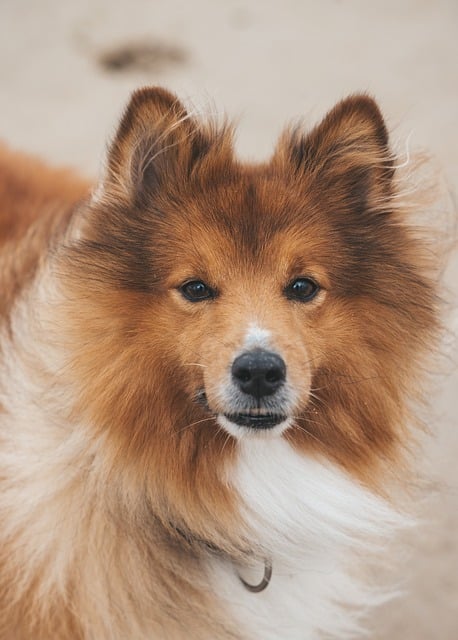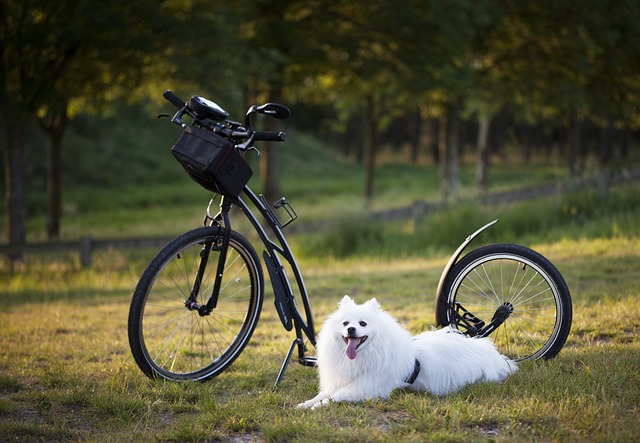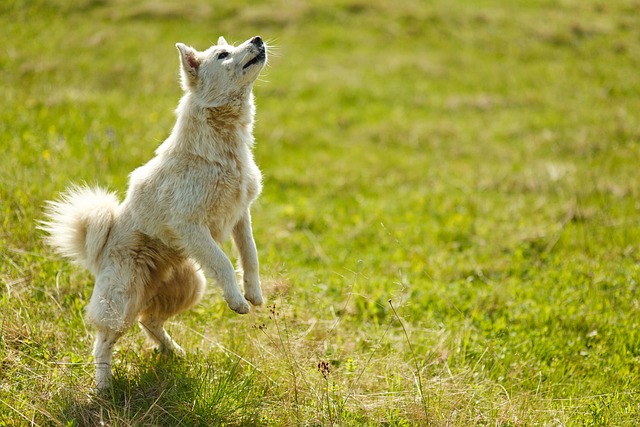To teach dog tricks, use positive reinforcement and break down the trick into small steps. Start with basic commands.
Teaching your dog tricks can be a fun and rewarding experience for both you and your furry friend. By using positive reinforcement techniques and breaking down the trick into manageable steps, you can effectively teach your dog new skills. Whether it’s teaching them to shake, roll over, or play dead, consistency and patience are key.
Remember to keep training sessions short and engaging to maintain your dog’s interest and motivation. With practice and dedication, you’ll be amazed at how quickly your dog can learn and perform impressive tricks.
What Is Canine Learning

Find the fundamentals of canine learning when it comes to teaching your dog tricks. Learn effective methods to train your furry friend with positive reinforcement techniques. Master the art of communication and build a strong bond with your dog through interactive and engaging training sessions.
The Bond Between Dogs And Humans
Dogs are known for their loyalty and affection towards their owners. They have been known as man’s best friend for centuries. The bond between dogs and humans is unique and special. Dogs are not just pets, but they are also companions, friends, and family members.
Basic Principles Of Dog Training
Training a dog can be a fun and rewarding experience for both the dog and the owner. Teaching a dog tricks can help them to be more obedient, intelligent, and better behaved. However, it is important to understand the basic principles of dog training before starting.
Here are some basic principles of dog training to keep in mind:
- Positive Reinforcement: Rewarding your dog for good behaviour will encourage them to continue that behaviour. This can be done with treats, praise, or toys.
- Consistency: Dogs respond well to routine and consistency. Training sessions should be regular and scheduled at the same time every day.
- Patience: Dogs learn at their pace. It is important to be patient and not get frustrated if they do not learn a trick right away.
- Short Sessions: Dogs have a short attention span, so training sessions should be kept short and focused.
- Fun: Training should be fun for both the dog and the owner. Dogs respond well to positive and playful interactions.
In conclusion, understanding the bond between dogs and humans and the basic principles of dog training is essential for teaching dog tricks. With patience, consistency, and positive reinforcement, any dog can learn new tricks and become a well-behaved and happy companion.
Essential Training Tools

When it comes to teaching your dog tricks, having the right training tools is essential for success. The right tools can make the training process more effective and enjoyable for both you and your furry friend. Here are some essential training tools that can help you teach your dog tricks effectively.
Choosing The Right Treats
Choosing the right treats is crucial for training your dog. High-value treats such as small pieces of cooked chicken or cheese can be very effective in motivating your dog to learn new tricks. Make sure to select treats that are soft, bite-sized, and easily consumable to prevent interruptions during the training session.
Clicker Training Essentials
Clicker training is a popular and effective method for teaching dogs tricks. Essential for clicker training, is the clicker itself, which is a small handheld device that makes a clicking sound. This sound is used to mark the desired behaviour at the precise moment it occurs, making it easier for your dog to understand which actions are being rewarded.
Pre-training Considerations
When it comes to teaching your furry friend some fun tricks, it’s important to consider a few pre-training factors to set both you and your dog up for success. By taking the time to assess your dog’s readiness and creating a distraction-free environment, you can lay a solid foundation for effective trick training.
Assessing Your Dog’s Readiness
Before diving into trick training, it’s essential to evaluate your dog’s readiness. Consider your dog’s age, physical condition, and temperament to ensure that they are mentally and physically prepared for learning new tricks. It’s also crucial to gauge your dog’s ability to focus and follow basic commands, as these are fundamental skills for learning more advanced tricks.
Creating A Distraction-free Environment
To set the stage for successful trick training, it’s vital to create a distraction-free environment. Find a quiet and familiar space where you and your dog can focus without interruptions. Remove any potential distractions, such as toys or loud noises, and ensure that the training area is well-lit and comfortable for both you and your dog.
Mastering Basic Commands

Teaching your dog basic commands is the foundation for more advanced tricks. By mastering these commands, you establish a clear line of communication with your furry friend, making future training easier and more effective.
The ‘sit’ Command
The ‘sit’ command is one of the first basic commands you should teach your dog. Start by holding a treat close to your dog’s nose and then moving your hand up, allowing their head to follow the treat and causing their bottom to lower. Once they are in the sitting position, say “sit” and give them the treat. Repeat this process several times until they understand the command.
Teaching ‘stay’ And ‘come’
Stay is another vital command. Begin by commanding your dog to sit. Then, with an open palm facing them, say “stay.” Gradually increase the time between the command and the release, rewarding them for staying put. For ‘come’, start in a quiet area with minimal distractions. Say “come” in a cheerful tone and encourage your dog to move towards you with a treat or toy. When they reach you, praise them and give the reward.
Progressing To Advanced Tricks

As your dog becomes proficient in basic tricks, it’s time to take their training to the next level by progressing to advanced tricks. These tricks require more focus, coordination, and patience from both you and your furry friend. With consistent practice and positive reinforcement, you can teach your dog impressive and entertaining advanced tricks that will strengthen your bond and showcase their intelligence and skills.
Roll Over And Play Dead
One impressive advanced trick to teach your dog is the “roll over” command. To start, have your dog lie down and then entice them to roll onto their back using a treat or a toy. Use the command “roll over” as they perform the action and reward them with praise and treats. With consistent practice, your dog will master this entertaining trick.
Fetching And Bringing Items
Another advanced trick that showcases your dog’s intelligence and obedience is teaching them to fetch and bring specific items on command. Start by teaching your dog to fetch a favourite toy or object when prompted. Once they have mastered fetching, you can progress to teaching them to bring specific items such as a ball, leash, or even the newspaper. This advanced trick requires patience, consistency, and positive reinforcement to ensure your dog understands and executes the commands effectively.
Positive Reinforcement Techniques
When it comes to teaching your dog tricks, positive reinforcement techniques are crucial for effective and enjoyable training. By utilizing rewards and encouragement, you can create a positive learning environment for your furry friend. Let’s explore some key positive reinforcement techniques that can help you teach your dog tricks successfully.
Reward Timing And Consistency
Reward timing is essential when teaching dog tricks. It’s important to immediately reward your dog with a treat or praise when they successfully perform the desired behaviour. This instant reinforcement helps the dog associate the action with the reward, reinforcing the behaviour. Consistency is also key. Always reward the same behaviour in the same way to avoid confusion.
Phasing Out Treats Over Time
When using treats as a reward, it’s important to gradually reduce their frequency to prevent over-reliance on food rewards. Phasing out treats can be achieved by gradually replacing food rewards with verbal praise or physical affection. This transition should be slow and gradual to ensure your dog continues to perform the tricks without expecting a treat every time.
Troubleshooting Common Training Issues
Teaching a dog tricks can be a rewarding experience, but it’s not always smooth sailing. Troubleshooting common training issues is an essential part of the process. By understanding how to deal with stubbornness and correct unwanted behaviours, you can overcome challenges and ensure successful training sessions.
Dealing With Stubbornness
When your dog seems stubborn during training, it’s essential to approach the situation with patience and understanding. Avoid getting frustrated, as this can negatively impact your dog’s willingness to learn. Instead, try breaking down the trick into smaller, more manageable steps. Offering plenty of positive reinforcement and rewards can also motivate your dog to cooperate.
Correcting Unwanted Behaviours
Unwanted behaviours such as jumping, barking excessively, or pulling on the leash can hinder the training process. To address these issues, focus on redirecting your dog’s attention to more appropriate behaviours. For example, if your dog jumps on guests, teach them to sit instead. Consistency and clear communication are key in correcting unwanted behaviours. By setting clear boundaries and using positive reinforcement, you can encourage your dog to replace undesirable actions with more desirable ones.
Maintaining And Building On Progress
Teaching your dog tricks is an enjoyable and rewarding experience. As a pet owner, it’s your responsibility to maintain and build on the progress you’ve made with your furry friend. The trick to keeping your dog’s training on track is to establish a regular practice schedule, introduce new challenges gradually, and ensure that your dog is having fun while learning.
Regular Practice Schedules
Consistency is key when it comes to teaching your dog tricks. Establishing a regular practice schedule will help your dog remember what they’ve learned and build on their skills. Try to schedule short training sessions every day, preferably at the same time. This will help your dog develop a routine and make training more effective.
During your training sessions, make sure to focus on one trick at a time. Start by reviewing the tricks your dog already knows before moving on to new ones. This will help your dog stay engaged and motivated.
Introducing New Challenges
As your dog becomes more proficient at the tricks you’ve taught them, it’s time to start introducing new challenges. This will help keep your dog engaged and motivated. However, it’s important to introduce new challenges gradually, so your dog doesn’t become overwhelmed.
Start by making small changes to the tricks your dog already knows. For example, if your dog knows how to “sit,” try teaching them to “sit pretty” or “shake.” These small variations will help your dog build on their existing skills while keeping training fun and interesting.
Teaching your dog tricks is a fun and rewarding experience for both you and your furry friend. By establishing a regular practice schedule, introducing new challenges gradually, and ensuring that your dog is having fun, you can maintain and build on the progress you’ve made together. Remember, consistency is key, and with a little patience and perseverance, your dog will be performing impressive tricks in no time!
Community And Social Learning
Community and social learning play a crucial role in teaching dogs new tricks. Interacting with other dogs and their owners can enhance the training experience.
Dog Training Classes And Groups
Enrolling in dog training classes provides structured learning environments for both dogs and owners.
Group settings allow dogs to observe and learn from each other.
Learning From Other Dog Owners
Engaging with other dog owners helps exchange tips and tricks for effective training.
Sharing experiences can provide insights into challenges and successes in teaching tricks.
Conclusion: Lifelong Learning With Your Dog
Find the joy of lifelong learning with your dog by teaching them new tricks. Enhance your bond through fun training sessions and watch your furry friend thrive with each new skill mastered. Embrace the journey of teaching and learning together for a fulfilling and rewarding experience.
The Joys Of Training Together
Training your dog tricks can be a fun and rewarding experience for both of you. Spending quality time together strengthens your bond.
Engaging in activities like training helps your dog stay mentally sharp and physically active. Celebrate small victories along the way.
Continuing Education For You And Your Dog
Learning never stops, and the same goes for teaching your dog tricks. Explore new techniques and tricks to keep things exciting.
Attend training classes or workshops to enhance your skills and deepen your relationship with your furry companion. Never stop growing together.
Frequently Asked Questions
What Is The Easiest Trick To Teach A Dog?
The easiest trick to teach a dog is “sit. ” Use treats to lure the dog into a sitting position and reward. Repeat for consistency.
What Is The Hardest Thing To Teach A Dog?
Teaching a dog impulse control is the hardest, as it requires patience and consistency in training.
What Are The 7 Most Important Dog Commands?
The 7 most important dog commands are: sit, stay, come, heel, down, no, and off. These commands help keep your dog safe, well-behaved, and under control. Teaching your dog these basic commands will make training easier and improve your relationship with your furry friend.
What Order Do I Teach My Dog Tricks?
Start with basic commands like sit and stay, then move on to more complex tricks. Consider your dog’s personality and abilities when deciding the order. Gradually increase difficulty to keep your dog engaged and motivated. Consistency and positive reinforcement are key for successful training.
Teaching your dog tricks is a rewarding way to bond and stimulate their mind. Remember, consistency is key in training. Celebrate small victories and be patient. With practice and positive reinforcement, your pup will be performing tricks in no time.
Keep the training sessions fun and watch your furry friend shine!
